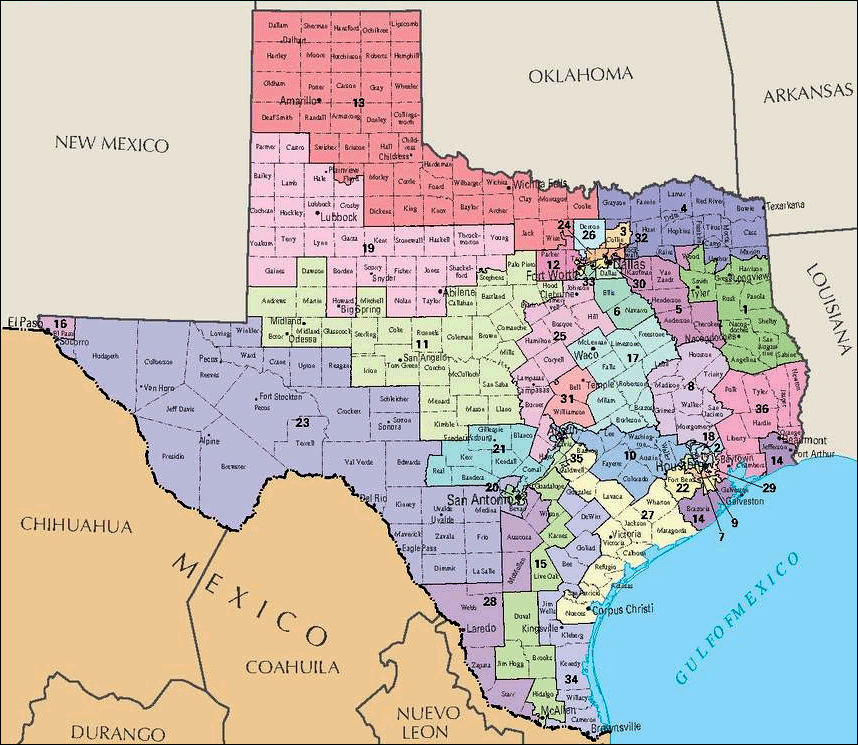By Jim Ellis
Oct. 5, 2021 — The Texas congressional map was unveiled in the state Senate last week, and already many incumbents and challengers are making or announcing political plans based upon what they are seeing … but this congressional plan is a long way from enactment.
In the past few days we have seen Rep. Vicente Gonzalez (D-McAllen) concede that he would consider moving to run in the open 34th District, which is due east of his own 15th CD and anchored in the city of Brownsville. Rep. Filemon Vela (D-Brownsville) is not seeking re-election to a sixth term, and he reportedly is favorable toward Gonzalez coming into his district.
The 34th remains solidly Democratic under the Senate introduced congressional map, but the 15th, already trending more Republican than in past elections, would actually have favored former President Trump by three percentage points under the proposed boundaries. Thus, Republicans would have a strong chance of winning here in an open seat race.
The 2020 GOP nominee, Monica de la Cruz-Hernandez, who held Rep. Gonzalez to a 50-48 percent re-election victory while spending barely over $400,000, has announced she is running again and House Republican Leader Kevin McCarthy (R-CA) has already endorsed her for the 2022 race.
Gonzalez is not the only one working on his next political move. Wesley Hunt (R), who lost 51-47 percent to Rep. Lizzie Fletcher (D-Houston) in 2020, said months ago that he would run for the House again, but was mum on exactly where he would land in hopes that one of the new seats would fall into his area. Under this proposed map, the new 38th District does encompass part of the current Fletcher district, and it is highly favorable to an eventual Republican nominee.
For her part, Rep. Fletcher gets a much stronger Democratic district in southern Harris County and now into Ft. Bend County, which is one of the fastest growing regions in the state. Reports also suggest that Hunt has over $1 million in his campaign account at the reporting period ending Sept. 30 despite not previously declaring where he would run. He announced last week that he has chosen District 38 if this new map becomes law.
Late last week, Republican businessman and retired Air Force officer Steve Fowler announced his congressional candidacy in the 28th District, Rep. Henry Cuellar’s (D-Laredo) seat that begins in San Antonio and spans to the Mexican border. Earlier this year, Jessica Cisneros, who held Cuellar to a 52-48 percent Democratic primary win in 2020, announced she is returning for a re-match.
Rep. Lloyd Doggett (D-Austin) will also have a decision to make. The new 37th District is wholly contained within Travis County and safely Democratic. He could easily run in this seat, thus leaving his 35th CD that is co-anchored in Austin and San Antonio for a Hispanic Democrat to likely win.







